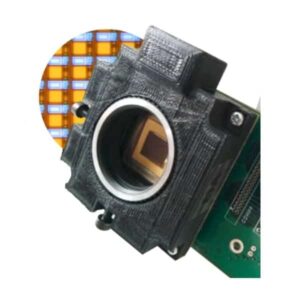 Chronocam, a developer of vision sensors and systems, has unveiled a prototype of its self-adapting CCAM (Eye)oT computer vision solution, which can sense in real time the relevant dynamic scene context and acquire only the data necessary.
Chronocam, a developer of vision sensors and systems, has unveiled a prototype of its self-adapting CCAM (Eye)oT computer vision solution, which can sense in real time the relevant dynamic scene context and acquire only the data necessary.
The technology, demonstrated by Chronocam for the first time at the Semicon Europa trade show, represents an advancement over conventional fixed frame rate camera technology. The technique eliminates the traditional speed vs. date rate tradeoff in vision systems, and will bring improvements in the performance, dynamic range and power efficiency of cameras in smart devices, IoT, robotics, automotive, aerospace and defense, and biomedical applications.
Chronocam’s proprietary approach leverages the company’s deep expertise in vision technology, sensor design and neuromorphic computing that includes several patents to this new vision CMOS sensing and processing technology. The technology is unique in its ability to achieve scene-dependent data compression that can be optimized in real-time according to varying application requirements. Image information is acquired and transmitted not frame-wise but continuously, and conditionally only from parts of the scene where there is new visual information. The result is an almost time-continuous but very sparse stream of events carrying the most useful full visual information.
With its innovative way to process vision information, CCAM (Eye)oT provides high performance figures, including speed (100 Kfps equivalent), dynamic range ( > 120dB), sensor-level video compression (100x) and power efficiency ( < 10mW).
The benefits of the Chronocam approach directly address the need for improvements in power efficiency and bandwidth in a range of vision-enabled application areas, as well as better integration in mobile platforms and sensor networks (IoT) and higher speed and safer control in autonomous vehicles, drones and robots. Potential uses for Chronocam’s technology include real-time 3D mapping, complex multi-object tracking, inspection, recognition and tracking devices, advanced driver assistance technology and low power “always-on” visual input for smart devices.


















